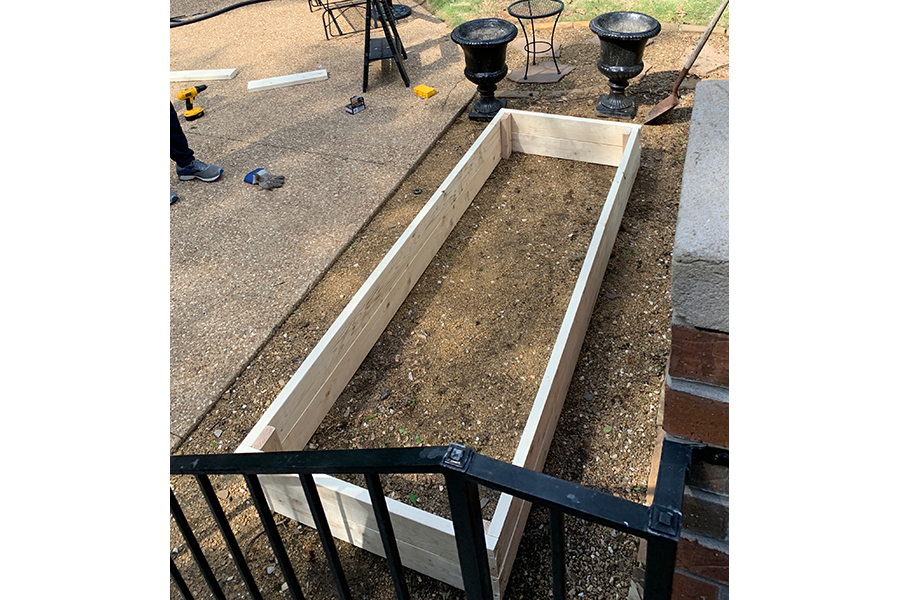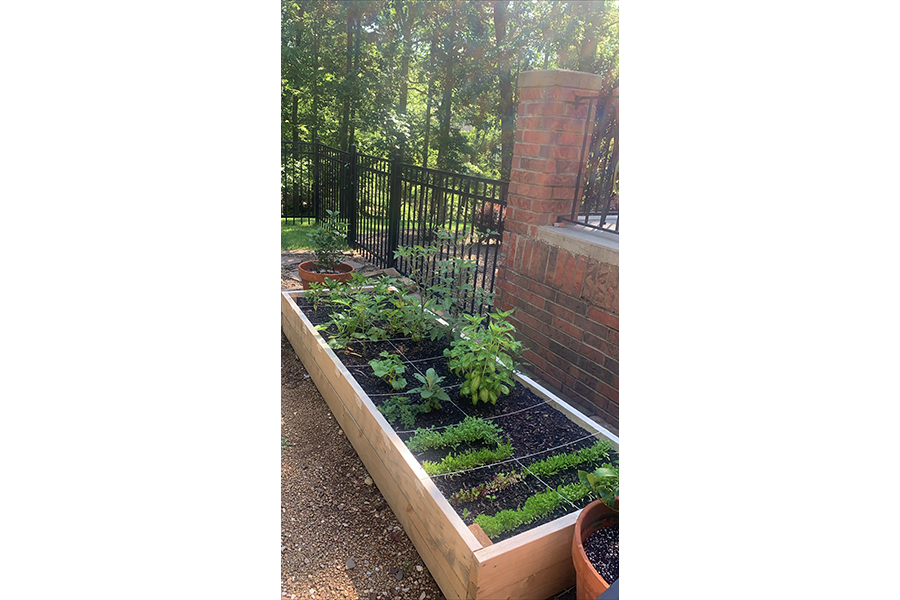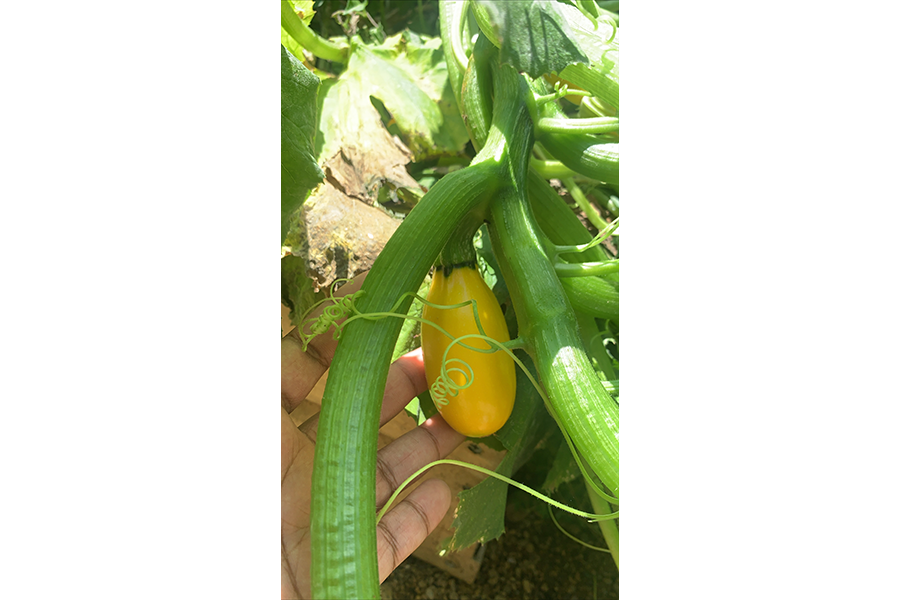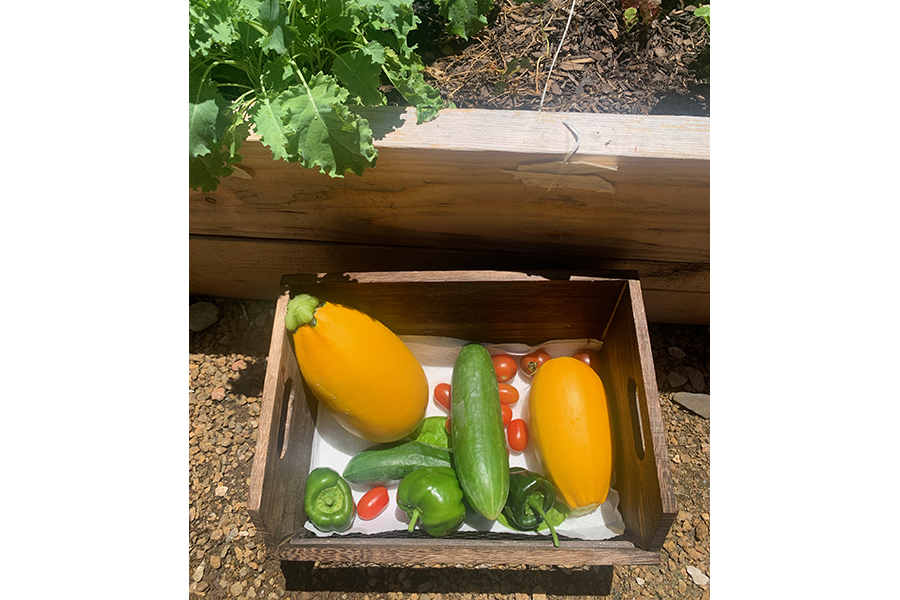The environment is more than plants and roads, including also how one is treated or perceived. All Black politics have an environmental dimension because Black people are still unable to simply exist in The United States.
Black Environmentalism
Introduction
To understand Black environmentalism, you must acknowledge its contrast with white environmentalism. The mainstream environmental movement in America started in the 1970s and 1980s and was often dismissed as a fad. In his critique of environmental politics, Robert Bullard writes, “The environmental movement in the United States emerged with agendas that focused on such areas as wilderness and wildlife preservation, resource conservation, pollution abatement, and population control, and was supported primarily by middle and upper-middle class whites.”1 These environmentalists were called hippies and tree huggers. Hippies were a part of the growing counterculture in the 1970s. Hippies would speak, act, and dress differently than standard youth. They usually were not taken seriously, so their attachment to the environmentalist movement turned it into a trend for the upper to middle class whites. White environmentalists who led the environmental movement neglected to advocate for racially charged environmental issues because it didn’t directly affect their health and everyday life. The capitalist implications of environmentalism were partially recognized, but the racial implications were ignored. Most importantly, white Americans were simply not concerned with the intersections of race and environment.
Our environment is the conditions of where we live and our connection to that space, while environmentalism is the protection of those conditions. The environment is more than plants and roads, including also how one is treated or perceived. So, even when operating in the same city or town, white Americans and Black Americans will always be in different environments. White environmentalists, for the most part, already feel protected in The United States because the US is a white environment. Black environmentalism looks different from mainstream white environmentalism because Black Americans are advocating for rights white environmentalists already have. White environmentalists fight for animal rights, while Black Americans are still struggling to get human rights.
When Kimberly Smith, political science professor, explains, “Access to environmental amenities such as parks and beaches was of course a major source of racial conflict throughout the twentieth century and it accordingly remained an important focus of the civil rights movement.2 The Black environmental movement is concerned with space, and the ability to occupy public and private spaces. It’s the same thing Black activists were fighting for in the Civil Rights Movement. All Black politics have an environmental dimension because Black people are still unable to simply exist in The United States. Forty years later, in 2020, Black people in America are constantly reminded that we don’t have the privilege to exist in certain spaces. Certain spaces could mean a car, a neighborhood, a home, a school, a workplace, or a church. We have seen that our protection and safety within these certain spaces is not prioritized. And if you can’t feel safe in your own home or out in public, can you really feel safe anywhere? At this point it is not “certain spaces” but The United States as a whole that is not a safe environment for Black people.
While black people continue to fight for the basic human rights we were already promised decades ago, white environmentalists are busy pleading for people to drink oat milk, shop at Whole Foods, buy $25 reusable water bottles, and purchase electric cars. The current mainstream environmentalist movement is classist and continues to put intersectional environmental issues to the side. The Black environmental movement wants Black children to have access to clean drinking water and be able to safely play in a public park. Any movement or organization that advocates for the protection or advancement of Black people in America, is a part of the Black environmentalist movement. Martin V. Melosi, who researched eco-racism, explains, “Because many of the environmental problems facing minorities are immediate and life threatening, it is predicted that they will become involved in environmental organizations and groups, if and when these groups deal with issues of survival and basic needs.”3 Like white feminist organizations, white environmental organizations refuse to recognize the intersectional implications of the problems they claim to want to solve. They tell people to eat organic and use natural products, but don’t consider people’s financial situations or accessibility. Young white liberals seem to care more about the lives of chickens than innocent black men. They retweet graphic videos of animals being killed to persuade people to stop eating meat and on the same day will share videos of black death. Like it’s the same. Whales trapped in a tank that’s too small at SeaWorld is more troubling and immediate than racial inequality.
Black Environmentalism
African Americans’ relationship with the earth began with the origins of slavery. Black people had to cultivate and take care of land that they couldn’t own for centuries. Smith writes, “Blacks have come to measure their own value according to the number of degrees they are away from the soil.”4 Slaves were forced to farm cotton, rice, and tobacco for decades. They would follow the plant from seed to harvest, and all of that labor was exploited. African Americans’ initial relationship with the earth was violent and traumatizing, so many African Americans grew to despise it. To some, development was no longer living off the land but living in a city. However, decades after slavery, Black people continued to farm and live off the land. Families and communities popped up all around the rural south, living miles away from the nearest white person. In her book about growing up in the rural south, Belonging, bell hooks states, “While my early sense of identity was shaped by the anarchic life of the hills, I did not identify with being Kentukian.”5 If you are alone on a hill and there is no one for miles to bother you, it doesn’t matter if that hill is called Kentucky or California. None of the labeling matters in nature. A name or label only has power if you give it power. The labels for plants, animals, and geographic areas are imaginary, they only existed to man. The name of a state doesn’t impact the natural environment. A group of white men in a room drew a black line on a map and called it Kentucky. Kentucky has a deep history of racial violence. Even though Hooks might have grown up within the lines that are considered Kentucky, she identifies with the hills that she lived on and called home. Nature allowed Black people to escape the racial violence in America; they could live independently and be self-sustainable. In nature, there is hierarchy. Yes, humans might believe they are at the top, but they can’t control everything. A controlling government, the patriarchy, capitalism, and racism cannot completely control nature. Again, Black environmentalists fight for Black people to be able to occupy space in America, but that doesn’t matter in nature.
Contrary to hook’s family, many Black people continue to look down upon Southern rural living. During the Great Migration, millions of Black Americans moved from the south to urban areas in the north for jobs and opportunities. They hoped that in the North they would be treated more like equals. In reality, racism and exploitation just took a different form. In his essay on the politics of equity, Bullard writes, “Discriminatory public policy decisions, unequal growth of central cities and suburbs, residential segregation, politicization of land use and zoning regulation, and the concentration of black workers in high risk and hazardous occupations all contribute to a diminished quality of life in the black community.”6 Mobility is a privilege in The United States. Unlike the rural South where you can move miles away from your oppressor, urban areas are very concentrated and connected. It is easier to control and group people. Black families, especially in New York City, were discriminated against and denied the basic rights that were given to their white counterparts. They were denied access to loans, not accepted to colleges, evicted, and exploited by their employers. To this day, African Americans are systemically pushed into certain areas or sections of urban areas. Poor people of color do not have equal access to healthy foods, health care, or mental health services. Some of these areas are called food deserts or, more recently, food apartheids. These are geographic areas where residents don’t have access to affordable healthy foods. Bullard notes, “The tobacco and liquor industries were among the first major corporations to recognize the utility of the black media in tapping the large black consumer market.”7 Businesses realized that since Black residents were forced to live in a certain area of the city, the businesses would easily target and saturate that market. These companies didn’t care about the health and social implications of oversaturating the Black market with addictive products. Companies that sell cheap unhealthy food target poor minority populations, while healthy food companies raise the price of food and target upper-middle class white communities. White environmentalists who live in upper-middle class white communities often shame people who eat at fast food restaurants or don’t eat organic because they don’t consider it is not accessible to everyone.
A 2010 New York City case study showed, “As expected based on the demographics of the areas, East Harlem and Central Harlem are significantly underserved and exposed to health risks based on the options for food purchase in the neighborhoods.”8 Black Americans are being targeted and exploited. Not having access to healthy foods affects generations. Attitudes that don’t value healthy eating are passed from parents to children. And children are not taught enough about valuing healthy eating in school. It becomes a generational pattern. In their study of Black women’s health, Wylin and Nortbert Wilson write, “Food insecurity is correlated with diet related diseases such as diabetes, heart disease hypertension, and obesity–diseases which poor black women suffer from disproportionately.”9 Already, the most unprotected person in the United States is the Black woman. Black women are being disproportionately affected by many environmentally caused illnesses, while there is still not adequate access to health care in black and brown communities. Black people not having access to healthy food, then dying from diseases that are caused by not having healthy food is a racially charged environmental issue that should be getting more attention than using metal straws.
My Garden
Similar to hooks’s experiences in rural Kentucky, I grew up in the Ozark Mountains in Arkansas. Even though I was surrounded by mountains, I never really had a relationship to nature. After moving to New York City for school, I finally felt connected to a place with people similar to me. My abrupt transition back to Arkansas due to the coronavirus pandemic left me feeling trapped. I had no idea what the rest of the year would look like, where I would be, or what I would be doing. Everyday was identical, so I had no perception of time. I could not leave my house without being reminded why I hated Arkansas so much.
The idea to build a garden came from me remembering reading Belonging. I couldn’t help but notice the connections between my situation and hooks’s. Only, she always fell back on her relationship with nature. She writes, “Growing food to sustain life and flowers to please the soul, they were able to make a connection with the earth that was ongoing and life-affirming.”10 Building a garden is a long-term investment, and I would finally have something that I could control. Studies about horticulture and mental health show that gardening and caring for something other than yourself is a good distraction for those who might feel overstimulated or stressed. Lucas Monroe, who studied horticulture therapy, noticed that “patients developed self-esteem, a sense of belonging, and a structured routine from gardening.”11 Those who are involved with horticulture develop a sense of mindfulness. It is therapeutic.
Before I built the garden, I thought the most helpful part would be building the raised bed and planting the vegetables. The most memorable thing was picking out what I wanted to plant, how much of it I wanted to plant, researching how acidic the soil needed to be for everything to grow, how far apart and how close the plants could be, and most importantly when they should be harvested. Jamaica Kincaid recounts the pleasures and shortcomings of gardening in Vermont, in her book, My Garden. Kincaid explains her garden as an extension of herself. Kincaid recounts, “I shall never have the garden I have in my mind, but that for me is the joy of it; certain things can never be realized and so all the more reason to attempt them. A garden, no matter how good it is, must never completely satisfy.”12 Gardening is so soothing because you must understand that you cannot control it or make it perfect. Society encourages us to all try to be perfect while at the same time saying, “nobody’s perfect.” I am so conditioned to always think about the next goal or the next achievement instead of focusing on my mental health and my wellbeing. My motivation to get out of bed would be because I need to finish this assignment or apply to this internship, fearing that I would miss an opportunity.
The structure of capitalism is inherently contradictory and unstable; everything is measured by work. You are more valuable if you are working and creating. If you are doing nothing, then you are doing something wrong. Your value is based on what you produce. Even if doing nothing is better for your mental health, it feels like a missed opportunity to start or produce something. It is a winner-take-all system that values competition, labor, and efficiency over wellbeing. “Winners” will always exploit the “losers” in order to keep up with competition and make more money. There needs to be exploitation and inequality in order for capitalism to function. Companies are dumping waste and chemicals into communities of color and causing birth defects and disease. However, that is not the forefront of the mainstream environmental movement in the US today. The environmental justice movement again has turned into a fad and companies are capitalizing off of real issues. Instead of raising money to help these communities that are struggling or even advocating for their protection of these communities, companies are just attaching a “natural” label to products and raising the price.
In a capitalist society, there is a constant pressure to value production over your well being and this creates a collective feeling of stress. Specifically, in the Black community, there is a pressure to be better and constantly improve yourself. While mental issues like depression and stress, anxiety and phobias, eating disorders and ADHD are all exacerbated by our capitalist society, there is still not adequate mental health care in Black communities. Especially in the city, there is a constant and collective feeling of stress and anxiety. In her research on connectedness, Amy Shaw writes, “If people lose the ability to connect with nature we run the risk of creating a nature-disconnect, which is hypothesized to have an impact on our empathy.”13 People are always so focused on themselves and what you can do for them. We collectively lose a sense of empathy. When people don’t have access to nature, they begin to feel detached from it. They don’t see the seasons and forget what it’s like to actually watch and feel earth changing. If you lose contact with something you value it less so seeing nature less means that overtime, you are more likely to care less about it. Everything is so fast and immediate you don’t recognize the beauty of slow, gradual growth. During quarantine, gardening was a healthy outlet for stress. When days or weeks would feel repetitive or identical, I could see that the garden was constantly changing and growing.
Environmental justice goes beyond green spaces. Black environmentalists advocate for the protection of Black people in any space or environment. Black and brown communities of color are disproportionately affected by environmental issues in The United States, but racially charged environmental issues are not a priority in the mainstream environmental movement.
- Robert Bullard, “Environmentalism and the Politics of Equity: Emergent Trends in the Black Community,” American Review of Sociology 7, no.2 (1987), 23.
- Kimberly K. Smith, African American Environmental Thought (University Press of Kanvas, 2007), 189.
- Martin V. Melosi “Equity, Eco-Racism and Environmental History,” Environmental History Review 19, no. 3 (1995), 6.
- Smith, “African American Environmental Thought,” 187.
- bell hooks, Belonging: A Culture of Place (Routledge, 2009), 17.
- Bullard, “Environmentalism and the Politics of Equity,” 165.
- Bullard, “Environmentalism and the Politics of Equity,” 24.
- Adi Segal, “Food Deserts: A Global Crises in New York City—Causes, Impacts, and Solutions, Consilience: The Journal of Sustainable Development 3, no. 1 (2010), 201.
- Wylin Dassie Wilson and Norbert L.W. Wilson, “African American Health Activism in the 21 St Century: Black Women and the Farm Bill,” Race, Gender & Class 20, no. 1/2 (2013), 237.
- hooks, Belonging, 47.
- Lucas Monroe, “Horticulture Therapy Improves the Body, Mind and Spirit,” Journal of Therapeutic Horticulture 25, no. 2 (2015), 34.
- Jamaica Kincaid, My Garden (Farrar Straus Giroux, 2001), 346.
- Shaw “Wildlife Gardening and Connectedness to Nature: Engaging the Unengaged,” Environmental Values 22, no. 4, 483.



